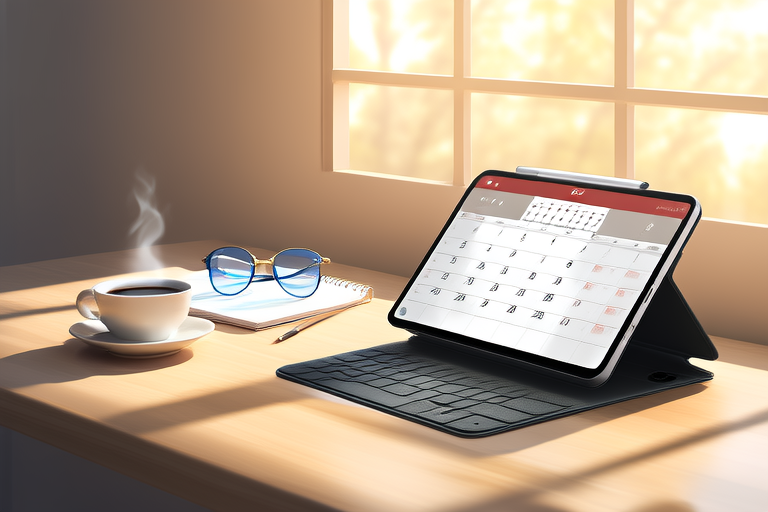Productivity Pitfalls to Avoid: How to Optimize Your Schedule for Success
Introduction
In today’s fast-paced world, staying productive is more important than ever. Whether you’re a student, professional, or entrepreneur, optimizing your schedule can significantly enhance your efficiency and success. However, many common pitfalls can hinder your progress if not addressed properly. In this article, we’ll explore the most frequent productivity traps and provide actionable tips to help you avoid them. By the end, you’ll have a clearer understanding of how to structure your day for maximum output.
Understanding the Importance of Time Management
Effective time management is the cornerstone of productivity. It allows you to prioritize tasks, reduce stress, and achieve your goals efficiently. However, poor time management can lead to wasted hours, missed deadlines, and overall dissatisfaction with your work-life balance. The first step in avoiding productivity pitfalls is recognizing the value of structured planning.
Prioritize Tasks Using the Eisenhower Matrix
One of the most effective tools for prioritizing tasks is the Eisenhower Matrix. This method divides your tasks into four categories based on urgency and importance:
- Urgent and Important: These tasks should be done immediately.
- Important but Not Urgent: Schedule these tasks for later.
- Urgent but Not Important: Delegate these tasks when possible.
- Neither Urgent nor Important: Consider eliminating these tasks altogether.
By categorizing your tasks this way, you can focus on what truly matters and avoid getting sidetracked by less critical activities.
Break Down Large Projects into Smaller Steps
Large projects can feel overwhelming, leading to procrastination and decreased motivation. To combat this, break down big tasks into smaller, manageable steps. For example, if you’re working on a report, start by gathering research materials, then outline the structure, followed by writing sections one at a time. Breaking tasks into smaller pieces makes them more approachable and easier to complete.
Eliminate Distractions and Set Boundaries
Distractions are one of the biggest barriers to productivity. Social media, emails, and even unnecessary meetings can steal valuable time from your day. Learning to manage distractions effectively is crucial for maintaining focus and efficiency.
Use Technology Wisely
Technology can both help and hinder productivity. While tools like project management software and task apps can streamline your workflow, they can also become distractions. Consider using apps that block distracting websites during work hours or set specific times to check email and social media.
Establish Clear Boundaries
Setting clear boundaries between work and personal life is essential for maintaining long-term productivity. Communicate your availability to colleagues and family members, and stick to designated work hours. This will help prevent burnout and ensure that you have time to recharge.
Implement Effective Scheduling Techniques
Scheduling is an art form, and mastering it can greatly improve your productivity. There are several techniques you can use to optimize your schedule for success.
The Pomodoro Technique
The Pomodoro Technique involves working in focused intervals (typically 25 minutes) followed by short breaks. After four “pomodoros,” take a longer break. This method helps maintain high levels of concentration while preventing mental fatigue.
Time Blocking
Time blocking involves scheduling specific blocks of time for different activities throughout your day. For example, you might dedicate mornings to deep work and afternoons to meetings and emails. This technique ensures that each part of your day is allocated to the appropriate task, reducing the likelihood of multitasking.
Practical Tips for Boosting Productivity
Now that we’ve covered some theoretical concepts, let’s dive into some practical advice you can implement right away.
Create a Morning Routine
Starting your day with a routine can set the tone for productivity. Include activities that energize and focus you, such as exercise, meditation, or journaling. A well-structured morning routine can help you feel more prepared to tackle your day’s challenges.
Review and Adjust Regularly
Your schedule should be flexible enough to adapt to changing circumstances. At the end of each week, review what worked and what didn’t. Make adjustments as needed to improve your workflow. This ongoing evaluation will help you fine-tune your productivity strategies over time.
Case Study: Optimizing a Busy Professional’s Schedule
Let’s consider the case of Sarah, a busy marketing manager who struggles with productivity. She often finds herself overwhelmed by her workload and spends too much time on low-priority tasks. Here’s how she optimized her schedule:
- Prioritization: Sarah started using the Eisenhower Matrix to prioritize her tasks. She realized that many of her daily activities were neither urgent nor important and could be eliminated or delegated.
- Time Blocking: She blocked out specific times for deep work, meetings, and administrative tasks. This helped her stay focused and avoid multitasking.
- Breaks and Rewards: Sarah incorporated short breaks into her schedule and rewarded herself for completing challenging tasks. This boosted her motivation and reduced burnout.
Conclusion
Avoiding productivity pitfalls requires a combination of strategic planning, self-discipline, and continuous improvement. By understanding the importance of time management, eliminating distractions, and implementing effective scheduling techniques, you can optimize your schedule for success. Remember, the key to lasting productivity is consistency. Start small, and gradually incorporate these strategies into your daily routine. With time, you’ll notice a significant improvement in your efficiency and overall satisfaction.
Actionable Advice:
- Begin each day with a brief review of your priorities.
- Experiment with different scheduling techniques until you find what works best for you.
- Stay mindful of your energy levels and take regular breaks to maintain focus.
By following these tips, you’ll be well on your way to achieving greater productivity and success.
